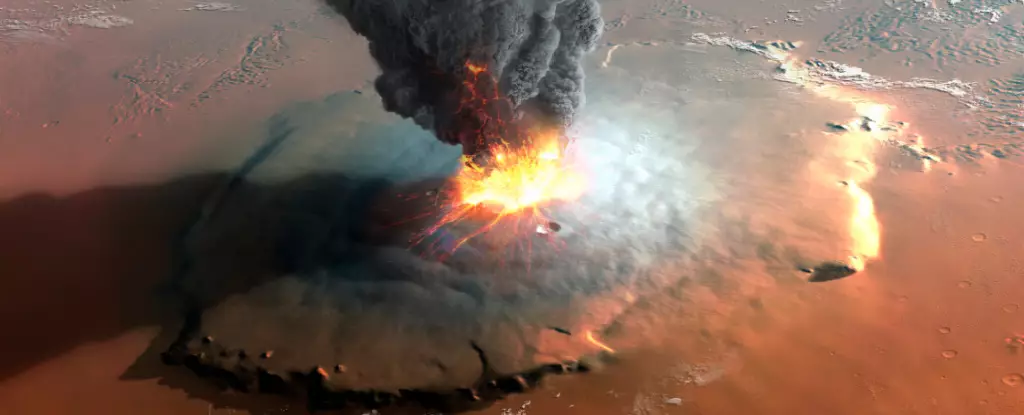Mars, despite its current quiet and dusty appearance, has a tumultuous history that could shed light on Earth’s own past. A recent survey of the Martian surface has uncovered evidence of a volcanic landscape, reminiscent of Earth before tectonic plates formed billions of years ago. Planetary scientist Joseph Michalski and his team from the University of Hong Kong analyzed the Eridania region in the southern hemisphere of Mars, using data from various orbiters. Unlike Earth, which has interlocking continental plates on its mantle, Mars is considered a one-plate planet. However, in its early years, Mars experienced massive and explosive volcanic activity, with Olympus Mons being the largest shield volcano, surpassing the size of Earth’s Mauna Loa volcano in Hawaii. The absence of tectonic plates on Mars allowed these volcanoes to grow to such immense sizes. Understanding Mars’ volcanic history provides valuable insights into how Earth’s own crust might have formed.
Mars’ Crust and Geological Record
Mars, with approximately 70 percent of its surface being more than 3 billion years old, presents a unique opportunity to study the early geological conditions of the Solar System. While the Martian crust bears the scars of numerous impact craters, its ancient geologic record remains relatively intact, offering valuable information on the early evolution of crusts. Michalski and his colleagues focused on the intensely magnetized crust of the Eridania region, which also showed indications of once having contained an ancient Martian sea. By analyzing orbital data, they identified four types of volcanoes in and around the Eridania sea: volcanic domes, stratovolcanoes, pyroclastic shields, and caldera complexes – remnants of a period of intense geological activity roughly 3.5 billion years ago. These volcanoes on Mars bore similarities to those found on Earth today, albeit with slightly larger diameters due to the planet’s lower gravity and more explosive volcanism. Furthermore, the volcanism in the Eridania region was distinct, with felsic volcanic compositions that had not been observed in any other volcanic suite on Mars. The unique qualities of the region made it an area of great interest for researchers.
Vibrant Topography and Crustal Evolution
The researchers delved into the topography of the ancient Martian landscape, uncovering evidence of thick volcanic deposits in the Eridania region, as well as sections of warped and folded crust and sagging basins. These findings suggest that Mars’ crust underwent a slow process of overturning, similar to a precursor of plate tectonics known as vertical tectonics. The team believes that there may be hundreds more volcanoes in the Eridania region, and many of them potentially erupted underneath an ancient Martian sea. This is intriguing, as it draws parallels to Earth’s Archean period, when our planet was predominantly covered in water, and life was just beginning to emerge. The scale of volcanic activity in the Eridania region is awe-inspiring, highlighting the dynamic nature of Mars’ geological history.
Mars’ violent past provides valuable insights into the early geological conditions of both the red planet and Earth. The absence of tectonic plates on Mars allowed for the growth of massive volcanoes, offering clues about Earth’s own crustal evolution. The Eridania region, with its unique volcanic compositions and evidence of an ancient sea, presents researchers with an exciting puzzle to unravel. By studying Mars’ geologic record and understanding its topography, scientists can gain a deeper understanding of our own planet’s history. The violent history of Mars serves as a reminder of the dynamic nature of planetary evolution and the potential for uncovering fascinating discoveries beyond our own blue dot.


Leave a Reply